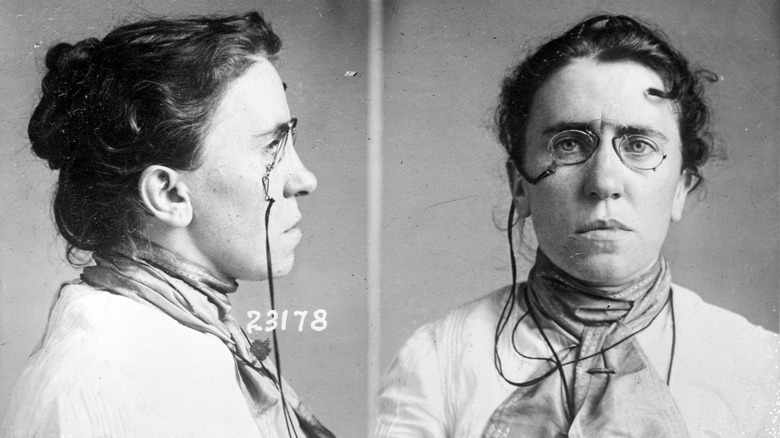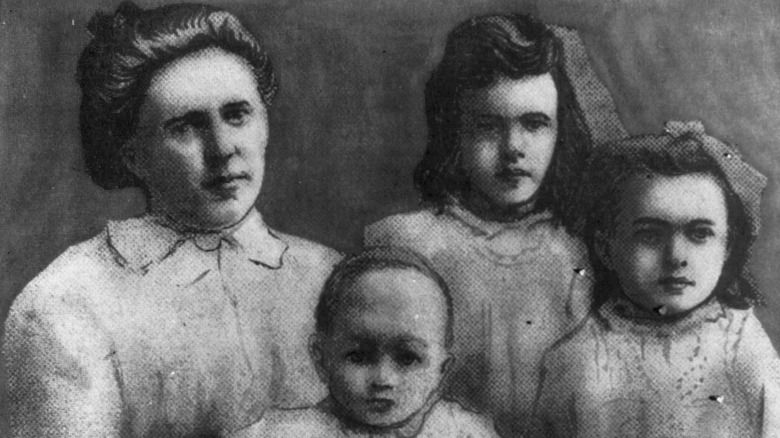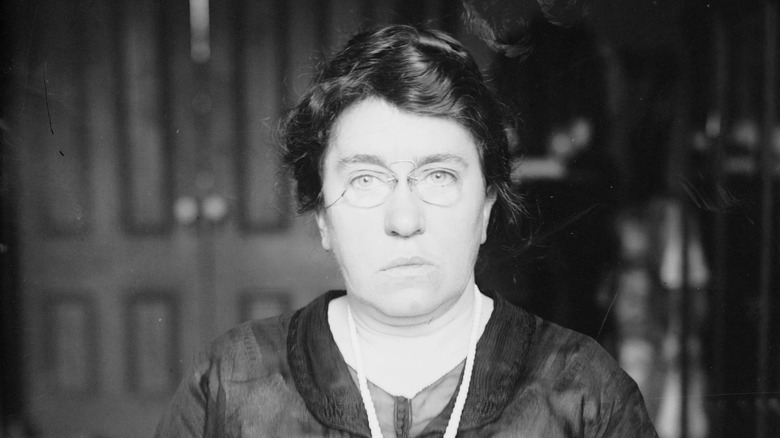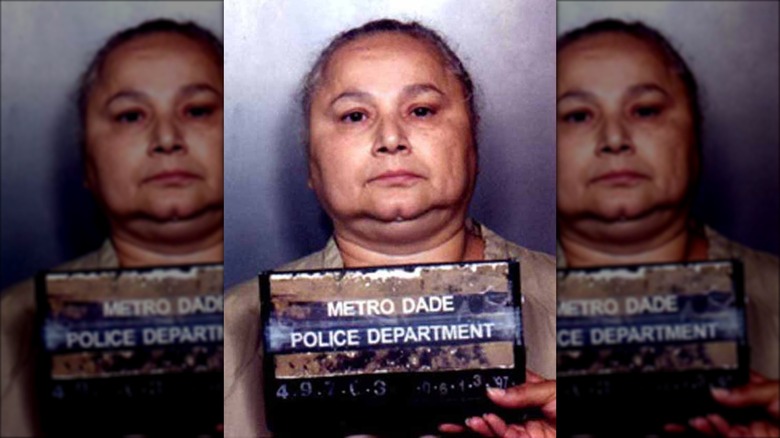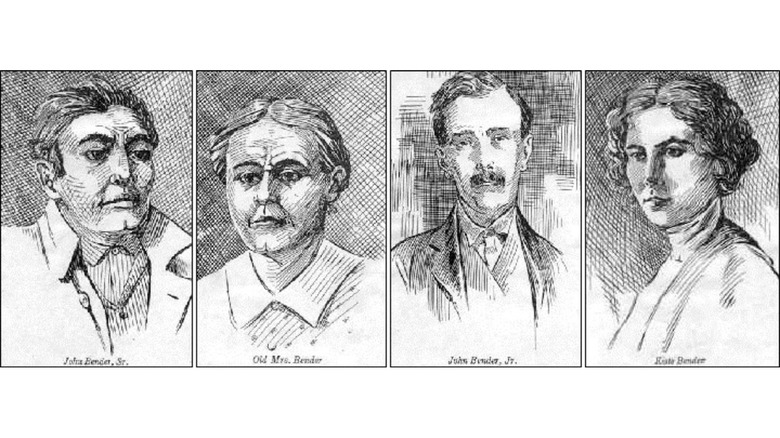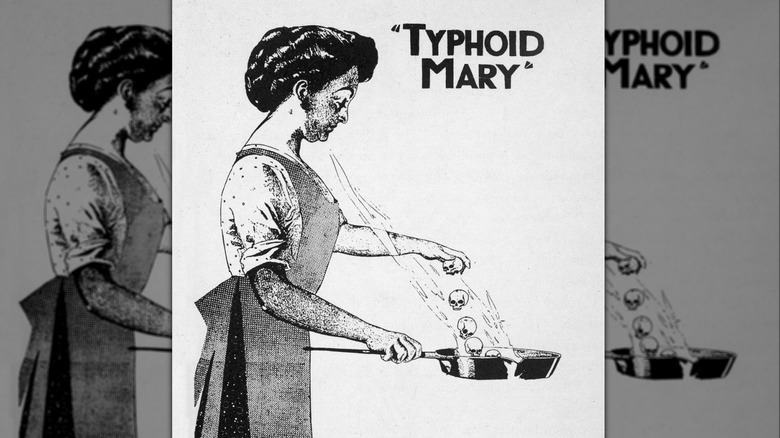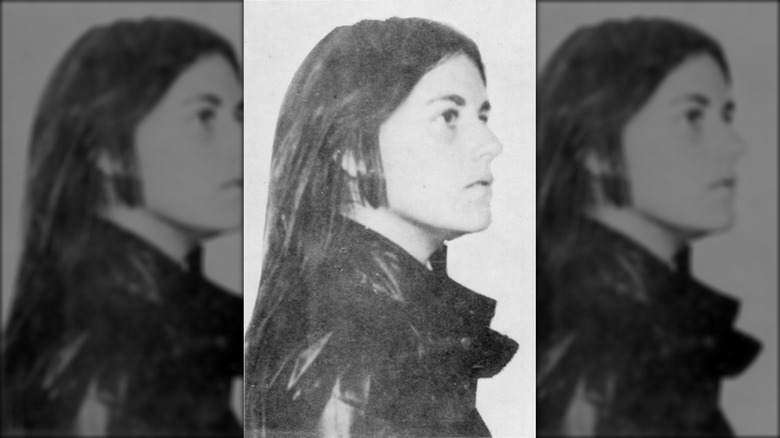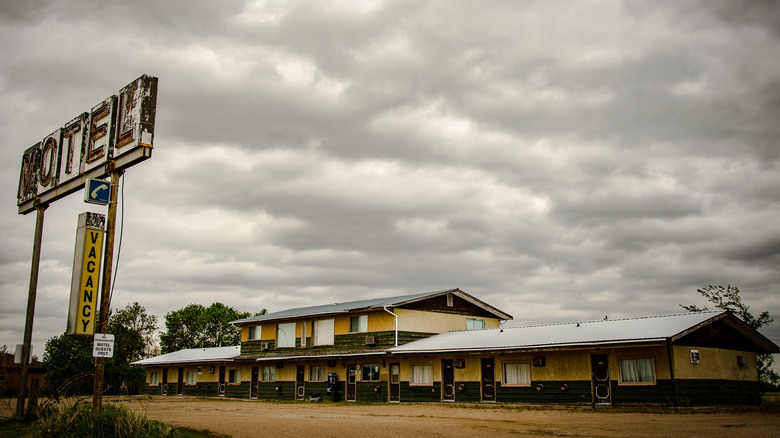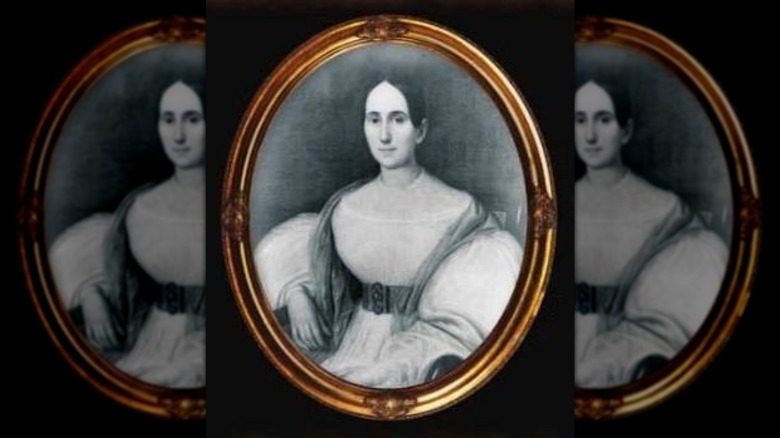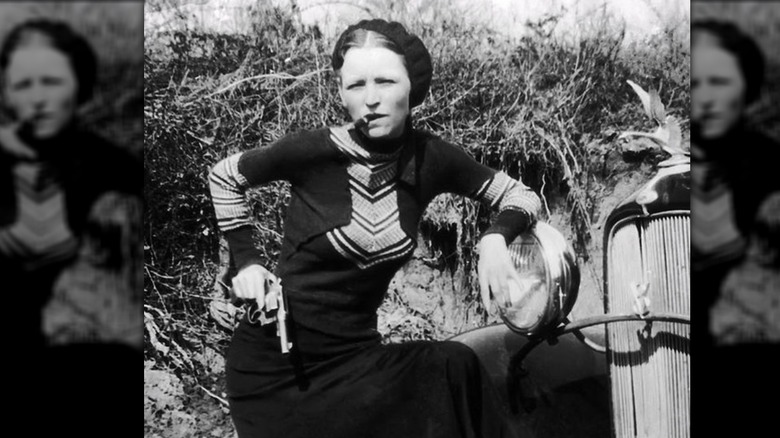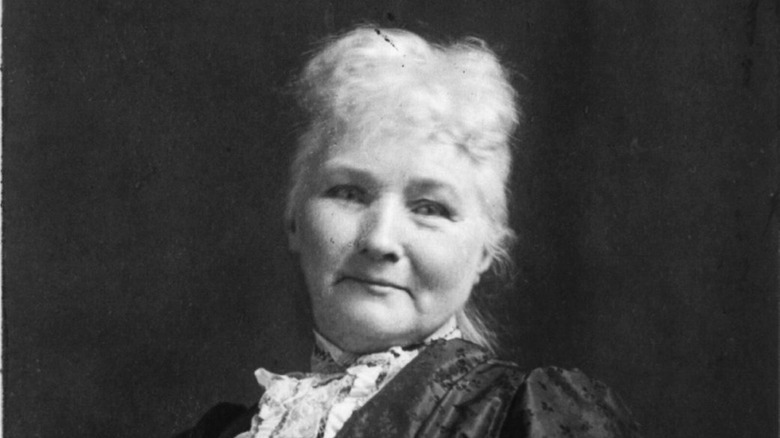The Most Feared Women In The U.S.
What does it mean to be feared? Fear can encompass plenty of things, especially when we're talking about the highly complicated subject of feared people. Women, who have had to grapple with societies that often expect them to be compliant and to make as few waves as possible, tend to draw extra attention when they start alarming those around them. Of course, when we talk about feared women, there's the obvious target that centers on the array of murderers and criminals who have terrorized their fellow humans for eons. As history has shown with the likes of bloodthirsty folks such as Belle Gunness, women are more than capable of instilling dread and terror across an entire nation.
But "feared" women may also be ones who are considered to be inconvenient for their place and time, but who might win serious praise today. Some, such as the activist popularly known as Mother Jones, spoke out loudly for the rights of American workers, with little care for the sensibility of the higher-ups who benefited from the exploitation of laborers or other vulnerable people. Even more women have presented seriously complex figures, with actions that may earn them plaudits in some arenas and serious disapproval in others.
So, what does it take to be one of the most feared women in the United States? The answer varies widely depending on who we're talking about, but it's clear that none of the women discussed here were shy or retiring.
Belle Gunness
For most of her life, Belle Gunness must have seemed pretty innocuous. According to the La Porte County Historical Society Museum, she was born in Norway in 1859 and emigrated to the U.S. in 1881. She worked as a servant for a while before marrying a fellow Norwegian, Mads Sorensen.
Their Chicago home burned down, giving the Sorensens an insurance payout. Their store caught on fire next. With the insurance money from that conflagration, Belle and Mads moved to Austin, Illinois. They fostered children there, two of whom died in the late 1890s. Then Mads' death came, conveniently on the only day his two life insurance policies were both in effect. Belle settled with her surviving foster children in LaPorte, Indiana. There, she communicated with Norwegian immigrants looking for a wife and a partnership in her farm. One, Andrew Helgelien, disappeared after Belle procured much of his money. His worried relatives began sniffing around, until the farmhouse caught on fire on April 28, 1908.
Besides the four burned bodies that appeared to be of Belle and the children, at least 13 more were found buried on her farm. But, as the La Porte County Public Library notes, the woman's body was missing its head and was far smaller than the hefty Gunness. Many assumed that Belle had faked her death and remained at large and ready to kill again. Sightings of her continued for decades after this incident, but no one ever uncovered the fate of Belle Gunness.
Emma Goldman
To quite a few people, Emma Goldman was a real problem. She was highly opinionated and didn't like the stratified, unequal world she saw around her. As per PBS, she was almost certainly influenced by the turmoil of her childhood spent in post-Revolutionary Prussia and Russia. After she moved to the United States in 1885, she found herself horrified by the violent pushback against labor organizers working to improve their station, as well as the seemingly endless drudgery of her life as a garment worker. So, Goldman became an anarchist.
Just about any government official is going to be wary of anarchists, given how the former are often calling for the dismantling of government and oftentimes in a vehement, attention-getting fashion. It didn't help that Goldman was charismatic, well-spoken, and willing to engage in violence. She was party to the attempted killing of businessman Henry Clay Frick and reportedly inspired President McKinley's assassin, Leon Czolgosz (via PBS). Though Goldman claimed that she didn't want to be violent, she often seemed to come out in favor of it anyway.
Her outspoken nature and anarchist ideals meant that Goldman was frequently deemed to be dangerous. According to the Jewish Women's Archive, she was often arrested and sometimes banned from lecturing, lending further fuel to her fight for freedom of speech. Goldman also advocated for other then-shocking notions, including women's suffrage, unionizing, and sexual freedom.
Griselda Blanco
As one of the leading crime lords of cocaine-wracked Miami in the 1970s and '80s, Griselda Blanco was responsible for a lot of death. According to Britannica, Blanco was born into poverty in Colombia. She reportedly kidnapped and killed a boy when she was only 11. We do know that she took up with a drug trafficker, Alberto Bravo, in the 1970s. They began importing cocaine into the U.S., though Blanco later returned to Colombia after authorities became too interested in her. Bravo later proved troublesome and was purportedly killed by order of Blanco. Eventually, she left a trail of suspiciously dead husbands, earning her the title of "Black Widow."
After setting up shop in 1970s Miami, Blanco began decimating competitors in the "Cocaine Cowboy Wars." Enriched and emboldened by the violent drug trade, Blanco lived lavishly. Ultimately, however, the law caught up with her and she was found guilty of drug-related charges in 1985 (via Britannica). Blanco was given a 15-year sentence, but prosecutors then worked to connect her to a series of violent murders. She ultimately escaped a death sentence by pleading guilty and was released in 2004.
Though Blanco was deported to Colombia, where she retired from her bloody ways, the criminal life wouldn't leave her alone. In 2012, she was shot by an assassin on a motorcycle as she exited a butcher's shop, according to The Guardian. It was a tactic she is said to have developed herself during her kingpin days in Miami.
Elvira and Kate Bender
Even before the truth of the Bender family's activities came to light, they had already made their neighbors in rural 19th-century Kansas pretty uncomfortable. According to CrimeReads, the first to arrive at the homestead in 1870 were John Bender, Sr. and his son, John, Jr. The father was apparently a German immigrant with limited English skills. The mother, Elvira (or Almira), was also poorly versed in English and was said to be supremely standoffish. Yet Kate, the 23-year-old daughter, was both pretty and charismatic. She also claimed that she could heal the sick and contact the departed.
The killings started in 1871, when men were found brutally murdered along the nearby Osage Trail, alongside a series of suspicious disappearances. CrimeReads has it that Dr. William Henry York followed up on his missing neighbors after hearing that they never arrived at their destination. After encountering the Benders on his search, York himself went missing.
But his brother, Alexander, wasn't about to let things go. He came across the Benders, too (via Slate). This time, the family skipped town. Searchers recovered about 11 remains from the cabin, orchard, and well. Though sightings of the family were reported at the time, they were never apprehended (half-fictionalized tales of people like Laura Ingalls Wilder notwithstanding). The four lived on in the horrified imagination of many Americans. Kate was especially terrifying, as an alluring, murderous young woman who could have been waiting to kill again in some other lonely place.
Mary Mallon
Mary Mallon didn't want to believe she was dangerous, but others disagreed. Better known today as "Typhoid Mary," she was an asymptomatic carrier of typhoid, a bacterial disease. In the late 19th and early 20th centuries, when Mallon worked as a cook for multiple families and facilities in and around New York City, typhoid killed about 10% of those infected (via The Hellenic Society of Gastroenterology). One affected family hired a sanitary engineer, George Sober, to get to the bottom of their woes. He traced it back to their cook, Mallon, who took great offense when Sober asked her for samples of her bodily fluids and feces.
Eventually, doctors from the New York Department of Health detained her and took the samples. Mallon was forced into quarantine in 1907. A new health commissioner released her in 1910, with the agreement that she not work as a cook. Mallon eventually found work at a maternity hospital — as its cook. When typhoid fever broke out there, Mallon was found out and forced into quarantine until her death in 1938.
Mallon had a fearsome reputation, but there is no evidence that anyone explained the danger of her carrier status to her. As PBS notes, she didn't receive training for work that would have kept her out of the kitchen, either. Mallon understandably became confused and angry as the people around her claimed that she was downright monstrous and used it as an excuse to lock her away for life.
Bernardine Dohrn
If you asked the FBI during the 1970s, one of the most dangerous women in the nation was a law school graduate named Bernardine Dohrn. She had already earned a graduate degree from the University of Chicago in 1964, according to Encyclopedia.com. After she earned her law degree in 1967, she moved to New York City and helped organize a student revolt at Columbia University in 1968. She returned to Chicago later that year, growing more involved with radical leftist causes. Dohrn concluded that violence had to be part of the movement and formed an activist group known as the Weather Underground.
They dove into plans for a "Days of Rage" protest that would see thousands of protestors going head to head with Chicago law enforcement. The action fizzled when only a few showed up, though Dohrn and others were arrested after breaking through a police blockade.
After this, Dohrn doubled down, arguing that the Weather Underground needed to start bombing government buildings to prove its anti-capitalist point. Things unraveled in early 1970, when three Weather Underground members were killed by bombs meant for Fort Dix. Dohrn went into hiding and the FBI put her on its Most Wanted List. Ten years later, married and with three children, she resurfaced. For all of her violent rhetoric and the fear she inspired, Dohrn was fined $1,500 and sentenced to three years of probation. Dohrn went on to become a law professor at Northwestern University (via Northwestern Now).
Iva Kroeger
As SFGate reports, Iva Kroger was anything but a sweet old grandma. Kroeger, born Lucille Hooper, was first apprehended in her twenties, having claimed to be a military nurse. She violated probation by skipping town and racking up a series of thefts and false identities. When she married Ralph Kroeger in 1954 San Francisco, she was going by "Iva."
The debt-saddled couple changed their names, becoming Eva and Ralph Long, and moved into a hotel in 1961. Iva ingratiated herself with Mildred and Jay Arneson, who owned the motel across the street. Then Mildred and Jay went missing. Police showed up at their hotel, only to find Iva behind the desk as the new proprietor. Family grew suspicious when she said that Mildred had simply signed over the deed to her; even more questions arose when odd notes supposedly from Mildred were delivered to their door.
Police dragged their feet on the investigation, but eventually got a search warrant and uncovered Mildred and Jay's graves in the motel's garage. But Iva had already skipped town. Newspapers quickly jumped on the story, warning readers of the dangerous murderer who might be in their midst. She was eventually apprehended in San Diego, though the media frenzy continued throughout her trial, fueled by Iva's attempts to establish her insanity. Nevertheless, she was found guilty and imprisoned, though she was granted parole in 1975. Though she caused trouble — including threatening murder in 1987 Florida — Iva died in obscurity in 2000 (via SFGate).
Delphine LaLaurie
According to ThoughtCo, Delphine LaLaurie was a very real Creole woman who was a fixture on the 19th-century New Orleans social scene. With her third spouse, Dr. Leonard Louis Nicolas LaLaurie, she took up residence in the city's posh French Quarter and settled into an unremarkable life. At this time in New Orleans, enslavement was common, and the LaLauries had enslaved quite a few people. As ThoughtCo reports, one tale has it that an enslaved girl was chased about the mansion by Madame LaLaurie, culminating in the girl's deadly fall from the roof. Whether or not this actually happened, it appears that there were already rumors that the LaLauries were mistreating their enslaved people by the 1830s.
In 1834, firefighters responded to a blaze at the mansion. They found an elderly woman who told them that she intentionally set the fire to kill herself. Her stories of mistreatment were given credence by the fact that the old woman was chained to the kitchen stove. An investigation uncovered a chamber of horrors deeper in the mansion, where seven enslaved people had been mutilated and chained. Graves were found in the mansion's yard, though the frantic newspaper accounts of the time don't agree on the number of bodies.
Delphine herself fled the city before a mob could take its revenge. She purportedly died in France in the 1840s. Her mansion is now a menacing tourist landmark, though its owner very clearly isn't interested in letting anyone inside (via Ghost City Tours).
Bonnie Parker
There's a certain romantic view of Bonnie Parker that tends to smooth over her rough edges. She was a good girl who got caught up with the wrong guy, some say — in this case, that would be the amoral Clyde Barrow, who met up with Bonnie in the poverty-ridden neighborhood of West Dallas.
According to Texas Monthly, Bonnie dreamed of acting and poetry, while Clyde was more focused on worldly gain and perhaps revenge for a young life marred by the Great Depression and a grim stint in prison. The eventual formation of a bank-robbing gang headed by Barrow gave rise to breathless newspaper coverage. Soon, there was a common perception of Bonnie and Clyde as a combination of Robin Hood and star-crossed lovers in modern America.
She may seem like a folk hero, but there's no denying that Bonnie Parker was a member of a violent gang that killed 13 people, according to the FBI. Bonnie herself may have never actually killed anyone, as per Smithsonian Magazine, but she was certainly an accomplice to a chilling array of bloody, desperate crimes. She was idolized by some of the people who were caught up in the oftentimes breathless media coverage of the pair, especially after the photos of her posing against a stolen car with guns and a cigar were released. Yet, few were ever really happy to have encountered the heavily armed Barrow gang, poetry-scribbling Bonnie included.
Mother Jones
So long as you're fighting for justice, striking terror into the hearts of the high and mighty can lead to a worthy legacy. Just ask Mother Jones. Born Mary Harris Jones in 1837 Ireland, she moved to Toronto when she was only five (via National Women's History Museum). She eventually moved to the United States, where she worked as a teacher and seamstress while also marrying George Jones. In 1867, her husband and all four of their children died of yellow fever. She tried to start over again in Chicago, but her nascent sewing business was decimated in the city's Great Fire of 1871. From there, she turned to social organizations and eventually labor organizing that advocated for the poor.
By the end of the 19th century, Jones was a veteran of hundreds of worker strikes and had published in support of her cause. In West Virginia, she was connected to a violent coal workers' strike that led to a 20-year sentence for conspiracy to commit murder, though the governor eventually commuted her sentence. Little seemed to slow down her hell-raising, given that Mother Jones continued organizing well into her ninth decade.
For all of her boundary-pushing work that earned her the title of "most dangerous woman in America" (via AFL-CIO), Jones could be surprisingly conservative in other arenas. According to the National Women's History Museum, she opposed women's right to vote, claiming that suffragists were only reinforcing the class stratification she so vehemently opposed.
